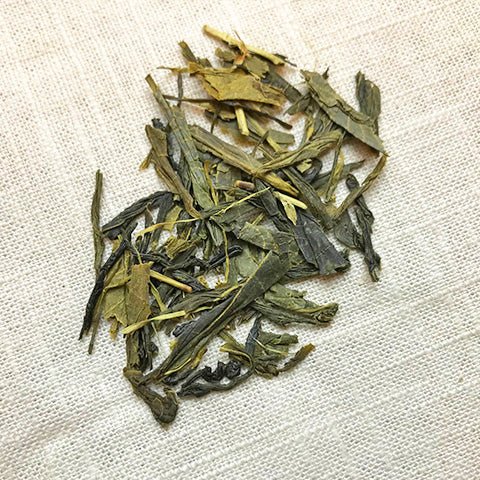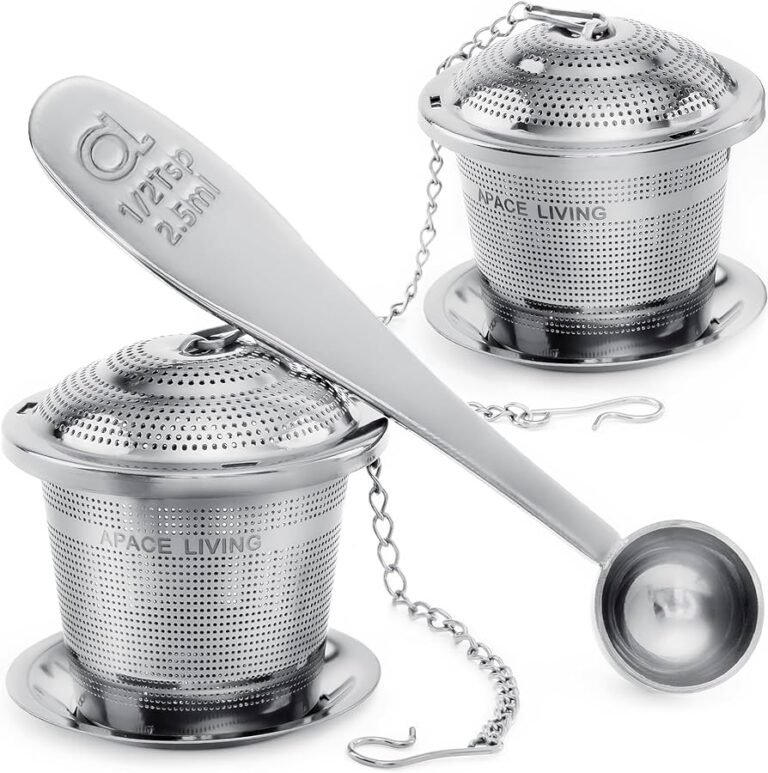Making loose leaf tea is simple and rewarding. It enhances the flavor and experience of your tea.
Loose leaf tea offers a richer taste compared to tea bags. It allows the leaves to fully expand, releasing more flavor. Many tea lovers prefer it for its quality and variety. In this guide, you’ll learn easy steps to brew the perfect cup.
Whether you’re a beginner or an enthusiast, these tips will help you enjoy your tea even more. From choosing the right tea to steeping it just right, this process is enjoyable and satisfying. Ready to elevate your tea game? Let’s get started on making the best loose leaf tea!
Introduction To Loose Leaf Tea
Loose leaf tea is a delightful way to enjoy a fresh cup of tea. It offers rich flavors and aromas that bagged tea cannot match. For tea lovers, exploring loose leaf options opens a new world of taste.
Why Choose Loose Leaf Tea
Loose leaf tea uses whole leaves, which retain more flavor. This results in a richer and more complex taste. Bagged tea often contains smaller pieces and dust, which lack the same depth.
With loose leaf tea, you have control over the strength and flavor. You can steep the tea to your liking, adjusting the amount and time. It offers a more personalized tea experience.
Health Benefits
Loose leaf tea is generally fresher and contains more antioxidants. These compounds help your body fight free radicals. Drinking loose leaf tea can support your overall health.
It also has less processing compared to bagged tea. This means it retains more natural nutrients. Many people find that it aids in digestion and boosts energy.
Different types of loose leaf tea offer various health benefits. Green tea, for example, is known for its high antioxidant content. Herbal teas can provide calming effects and support relaxation.

Credit: 27teas.com
Types Of Loose Leaf Tea
Exploring the world of loose leaf tea can be a delightful journey. With so many types available, each offers unique flavors and benefits. Let’s dive into some of the most popular types of loose leaf tea.
Black Tea
Black tea is one of the most common types of loose leaf tea. It is fully oxidized, giving it a strong flavor and dark color. Popular varieties include:
- Assam
- Darjeeling
- Earl Grey
Black tea contains more caffeine than other teas, making it a great morning beverage.
Green Tea
Green tea is known for its mild flavor and numerous health benefits. It is less oxidized than black tea, preserving its green color and fresh taste. Common types of green tea include:
- Sencha
- Matcha
- Gunpowder
Green tea is rich in antioxidants, which can boost your immune system.
Oolong Tea
Oolong tea is partially oxidized, placing it between black and green tea in terms of flavor and color. It offers a complex taste that can range from floral to fruity. Some popular oolong teas are:
- Tie Guan Yin
- Da Hong Pao
- Milk Oolong
Oolong tea is often enjoyed by tea connoisseurs for its unique and varied flavors.
Herbal Tea
Herbal tea is made from a variety of herbs, flowers, and spices. It is naturally caffeine-free and comes in many flavors. Popular herbal teas include:
- Chamomile
- Peppermint
- Rooibos
Herbal tea can be a soothing drink, perfect for relaxing before bed.
Essential Tea Brewing Equipment
To make the perfect cup of loose leaf tea, using the right equipment is essential. The right tools can make a huge difference in the flavor and quality of your tea. Here, we discuss the essential tea brewing equipment you need to brew loose leaf tea.
Teapots And Infusers
A good teapot is crucial for making loose leaf tea. It helps to properly steep the tea leaves. Choose a teapot made from glass, ceramic, or stainless steel. These materials do not affect the taste of the tea.
Infusers are another important tool. They hold the tea leaves and allow water to flow through. This ensures even steeping. Popular types include:
- Ball infusers
- Basket infusers
- Silicone infusers
Kettles And Thermometers
To brew tea correctly, you need to heat the water to the right temperature. A good kettle helps achieve this. Electric kettles with temperature control are great. They let you set the exact temperature needed for different types of tea.
A thermometer is also useful. It ensures the water is at the right temperature before you pour it over the leaves. This is especially important for delicate teas like green or white tea.
Tea Storage
Proper tea storage is key to maintaining the flavor and freshness of your tea leaves. Use airtight containers to keep your tea fresh. These containers should be kept in a cool, dark place.
Here are some tips for storing tea:
- Keep away from light
- Store in a dry place
- Avoid strong odors
Proper storage ensures your tea stays fresh and flavorful for a long time.
Selecting Quality Loose Leaf Tea
Choosing the right loose leaf tea is essential. This ensures a great taste and aroma. High-quality leaves make all the difference. Here, we’ll guide you through the process. Learn how to read labels and find trusted suppliers.
Reading Labels
Reading the labels on tea packages is important. Look for the following information:
- Origin: The country where the tea is grown. Each region has unique flavors.
- Type: The category of tea, such as black, green, or oolong.
- Harvest date: Fresh tea has a better taste. Check for the most recent harvest.
- Ingredients: Avoid teas with artificial additives. Pure tea leaves are best.
Trusted Suppliers
Buying from trusted suppliers ensures quality. Here are some tips to find them:
- Research online reviews. Look for positive feedback from other tea drinkers.
- Check if the supplier has certifications. Organic and fair trade are good indicators.
- Visit local tea shops. Talk to the staff and ask questions about their products.
- Look for transparency. Suppliers who share detailed information about their teas are reliable.
By following these tips, you can find high-quality loose leaf tea. This will enhance your tea-drinking experience.
Proper Tea Measuring Techniques
Brewing loose leaf tea is an art. The right techniques ensure a perfect cup. One critical step is measuring the tea correctly. This guarantees consistent taste and quality.
Tea To Water Ratio
The tea-to-water ratio is vital. It affects the flavor strength. Use the following table for guidance:
| Tea Type | Tea (grams) | Water (ml) |
|---|---|---|
| Green Tea | 2 grams | 250 ml |
| Black Tea | 2.5 grams | 250 ml |
| Oolong Tea | 3 grams | 250 ml |
| Herbal Tea | 3 grams | 250 ml |
Adjust these amounts to your taste preference. More tea for stronger flavor. Less tea for a milder taste.
Using A Scale
Using a scale ensures precision. Follow these steps for accurate measurement:
- Place the scale on a flat surface.
- Turn it on and set it to grams.
- Place an empty cup on the scale. Tare the scale to zero.
- Add the loose leaf tea to the cup. Measure the required grams.
For best results, use a digital kitchen scale. It provides more accuracy. Accurate measurement is key to a perfect tea experience.
Water Temperature And Brewing Time
Water temperature and brewing time are crucial for making perfect loose leaf tea. Each type of tea has its own ideal conditions. This ensures you extract the best flavors and avoid bitterness. Let’s explore the ideal temperature and steeping duration for each tea type.
Ideal Temperature For Each Tea Type
Water temperature greatly affects the taste of your tea. Different teas need different temperatures. For green tea, use water around 160°F to 180°F (71°C to 82°C). This prevents a bitter taste.
White tea is delicate. Use water at 160°F to 185°F (71°C to 85°C). This keeps its subtle flavors intact. Oolong tea needs hotter water. Use 185°F to 205°F (85°C to 96°C). This brings out its complex flavors.
Black tea requires boiling water at 212°F (100°C). This extracts its bold flavors. Herbal teas also need boiling water. This ensures you get the full benefits of the herbs.
Steeping Duration
The steeping duration is just as important as the temperature. Green tea should steep for 2 to 3 minutes. This keeps it from becoming too strong. White tea needs a bit more time. Steep it for 4 to 5 minutes.
Oolong tea varies. Steep it for 3 to 5 minutes. This depends on how strong you want it. Black tea is robust. Steep it for 3 to 4 minutes. This ensures a rich flavor without bitterness.
Herbal teas can steep longer. Aim for 5 to 7 minutes. This extracts all the beneficial compounds.
Serving And Enjoying Loose Leaf Tea
Serving loose leaf tea is an art. It’s the step where all your efforts come to fruition. This is the moment to savor the flavors and aromas of your carefully brewed tea.
Choosing The Right Teacups
Teacups matter. They can enhance your tea experience. Porcelain and ceramic cups retain heat well. This keeps your tea warm longer. Glass cups let you enjoy the color of the tea. Choose a cup that feels good in your hands.
Enhancing Flavor
You can add natural sweeteners. Honey and agave syrup are good choices. Fresh herbs like mint and basil can add a refreshing twist. Try a slice of lemon or a few berries for a fruity touch. These additions can elevate your tea experience.

Credit: inpursuitoftea.com
Storing Loose Leaf Tea
Storing loose leaf tea correctly ensures it retains its flavor and aroma. Proper storage protects the tea from light, moisture, and air. Let’s explore how to store loose leaf tea to enjoy every cup at its best.
Avoiding Light And Moisture
Light can degrade the quality of loose leaf tea. Store tea in a dark place to prevent this. Moisture is another enemy of tea. It can cause mold and spoil the tea. Always keep tea in a dry area to maintain its freshness.
Proper Containers
Use airtight containers for storing loose leaf tea. These keep air and moisture out, preserving the tea’s taste and aroma. Metal tins or dark glass jars work well. Avoid clear glass jars as they let in light, which can harm the tea.

Credit: www.stashtea.com
Frequently Asked Questions
What Is Loose Leaf Tea?
Loose leaf tea is tea that is not pre-packaged in tea bags. It is usually of higher quality.
How Do You Brew Loose Leaf Tea?
To brew loose leaf tea, use a tea infuser or teapot. Add hot water and steep for a few minutes.
What Are The Benefits Of Loose Leaf Tea?
Loose leaf tea retains more nutrients and flavors. It offers a richer and more enjoyable tea experience.
How Much Loose Leaf Tea Should I Use?
Use about one teaspoon of loose leaf tea per cup. Adjust according to your taste preferences.
Conclusion
Brewing loose leaf tea is simple and rewarding. Start with quality tea leaves. Use fresh, filtered water. Measure the right amount of tea. Steep for the correct time. Enjoy the rich flavors and health benefits. Experiment with different teas to find your favorites.
Share this relaxing ritual with friends and family. Appreciate each cup of tea, one sip at a time. Happy brewing!





